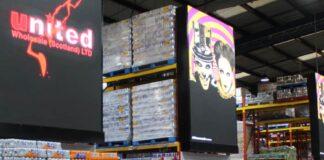With the big trends in this sector remaining consistent for much of the past decade, Tom Gockelen-Kozlowski looks at how to take advantage of these as well as any new opportunities.
In an industry that is dealing with a number of major potential threats, the likes of on-the-go, sharing and price-marked packs have driven sales in a category now worth somewhere between £881m and £1.2bn a year, according to industry estimates.
As these trends become established, the sophistication of both brand activity and product development has increased. Sharing – led by the rise of the big night in – is a major beneficiary of a mega trend affecting most major convenience categories: big, bold and sometimes strange flavours.
The category’s predicted growth up to 2021
In March, Nestlé further invested in the Rowntree’s Randoms brand with a national rollout for Randoms Sours and Squish’ems. According to the supplier, the sours market alone is worth £67m to sugar confectionery. Mondelez, meanwhile, has launched Soft Jellies Fizzy Fish after the success of Soft Jellies Wild Safari as part of the Maynards Bassetts brand.
Mondelez’s trade communications manager, Susan Nash, says sharing bags are an important part of a wholesaler’s range.
Among the company’s advice for depot managers is to range according to sales, capitalise fully on seasonal opportunities and ensure that depots are stocked up with new products and promotional stock ahead of any media activity so retailers can stock up.
On the go
As some brands have capitalised on sharing, others have found success in the other big trend: on the go. “Last year, we commissioned independent research that revealed the top three considerations for Brits deciding on confectionery choices to be price, quality and a recognisable brand,” says Andrew Ovens, marketing manager at Big Bear Confectionery.
“With the travel and commuter market pinpointed as key sales growth areas, we’ve been working hard to create the right offering.”
Format has been all-important and Big Bear’s XXX brand has been transformed into XXX Minty Balls, “a tongue-in-cheek-treat” that comes in a bottle-style format.
Significantly, Ovens also makes the point that “heritage” in the category “massively over-indexes among 18-to-29-year-olds”, a point that many retailers used to trend and
novelty-obsessed millennials might not be aware of.
While XXX is one example of a mint being adapted for the bottle format – Big Bear actually calls them ‘travel packs’ – Mars Wrigley Confectionery has taken things one step further, introducing Skittles in this pack size. Wrigley introduced the 46-pellet bottle for Extra gum in 2013 and can claim credit for helping make this on-the-go format an industry standard.
“The bottle format enables consumers to enjoy Skittles on the go and features an easy-to-open resealable lid – perfect to enjoy when on the go or in the car,” says Dan Newell, confections marketing manager at Mars Wrigley Confectionery.
With the company also launching Starburst chewing gum last year –currently overperforming on its predicted £15m incremental growth for the chewing gum category – it highlights the importance Mars Wrigley Confectionery sees in the on- the-go opportunity.
Part of the reason for this is the long-held belief that sugar confectionery in general – and mints and gums in particular – can benefit from retailers’ rising food-to-go sales.
“The food-on-the-go trend provides a fantastic opportunity to encourage gum as an additional purchase,” says Newell.
“Retailers should set up cross category-merchandising displays that focus on different consumption occasions throughout the day, such as ‘a sandwich and pack of chewing gum for £2’.”
Price-marked packs
If your depot is supporting retailers through the launch of a food-to-go offer, there is no reason not to add this extra sales opportunity into the mix.
The continuing success of price-marked packs in sugar confectionery, meanwhile, highlights how important value for money is, even in an impulse market.
“More than two thirds of shoppers buy PMPs in convenience stores and currently 68% of retailers stock a selection of them,” says Newell.
Starburst and Skittles are available in PMPs across a range of formats, as are almost all sharing bags and many impulse formats from other suppliers, too.
“As well as offering good value, PMPs help retailers build a sense of trust with shoppers, with half saying price-marked packs reassure them they are not being overcharged,” adds Newell.
Sugar-free
No analysis of the sugar confectionery market would be complete without looking at the growing demand for low- and no-sugar products, fuelled by threats of government intervention and concerns over growing obesity rates – with rising rates among children a significant concern.
Thankfully, there are signs that suppliers are turning this challenge into an opportunity to profit. Storck – manufacturer of Werther’s Originals – deserves particular mention. The brand’s sugar-free range has become a well-established part of many retailers’ ranges – it says it now represents 64% of the entire sugar-free confectionery market – and the company is further investing in helping wholesalers improve sell-through.
“This year, Werther’s Original underwent a case-size reduction, introduced to offer retailers a competitive price per case with less upfront cost, making the range more accessible to the channel,” says Andy Mutton, managing director at Storck. “As part of this reduction, the case has a new design, with a glossy finish that helps to increase visibility on shelf, helping to increase distribution.”
Storck provides PoS, FSDUs and has given the brand a new pallet wrap design to increase awareness and drive sales in depot. Of course, mints and gums has been somewhat ahead of the game on this front with major brands such as Wrigley Extra and Airwaves offering a full range of sugar-free products for decades.
It’s no surprise, therefore, that the new Starburst chewing gum launched by Mars Wrigley Confectionery is also sugar-free. Another major name in the market – Mondelez’s Trebor brand – meanwhile, has launched Trebor Cool Drops, which come in Sugar Free Extra Fresh and Sugar Free Lemon flavours.
With reduced-sugar varieties such as Haribo Fruitilicious, Rowntree’s Fruit Pastilles and Randoms as well as Fruittella all now available – not to mention a sugar-free version of M&S’s Percy Pigs – this is clearly just the start of a journey.
However, Mark Roberts, trade marketing manager at Fruittella brand-owner Perfetti Van Melle, warns that trust is lacking when it comes to low- and no-sugar products. “Taste can be a barrier,” he says. “These products have to taste as good, as confectionery is a treat.”
He recommends wholesalers host tastings of any new products so that people are able to experience the quality of the product. Roberts also suggests that once a product has proved its worth in depot, wholesalers should “build it within confectionery”, rather than give low- and no-sugar products their own area.
Primed for groups
The goal, here, is to bring new customers into the category and it yet again highlights something perhaps counter-intuitive about a market that can seem under pressure from shopper behaviour and looming legislation.
If wholesalers can help retailers improve sugar confectionery sales, then the prize will be almost total incremental growth – whether that’s from the lunchtime shopper buying a breath- freshening mint, or a health-conscious mum feeling able to buy into a new reduced-sugar sub-brand.
As Andrew Ovens says: “With sugar confectionery predicted to grow by 3.6% until 2021, it provides a real opportunity to grow sales.”
Supplier viewpoint

“Sugar confectionery is always in demand, and it’s worth depot managers looking regularly through their range and asking whether every product deserves its space. Price-marked packs will remain key and the £1 price is particularly important – ‘coin is king’ – and this can work in different ways. If a younger shopper comes in with their pocket money to buy a 50p bag of sweets, but they see a three-for-£1 price-marked promotion, then retailers are giving them the encouragement to trade up. Meanwhile, a £1 price-mark on an impulse purchase gives customers that added assurance – they can feel the coin in their hand.”
Retailer viewpoints

“It’s really important that depots have new lines in stock, as I would go to another cash and carry in order to source them. The best recent activity was the win-a-holiday promotion on Haribo Starmix and Booker had a two-for-£1.50 offer on Haribo. Margins are important, though – otherwise there’s no point stocking these products.”

“When it comes to younger shoppers, bigger bags are in growth because the difference between what they cost and a single pack costs is getting less and less. Older shoppers are still a big part of the market, and mints and boiled sweets are the big sellers for them.”

“People have started to trade up to larger bags, which leaves me with an overall smaller margin, so I’ve found bigger profits in candy from the US from specialist suppliers. I really need more PoS, because building theatre is so important, but I’d love to see more of the larger wholesalers focusing on the US confectionery trend.”

“Kids aren’t buying as many Freddos and things like that in our shop because even they can see that they can get more for their money with a sharing bag or bar. Brands aren’t as big now, either, and Booker’s Euro Shopper range – mint imperials, toffees and gums – are very big sellers.”
Product news
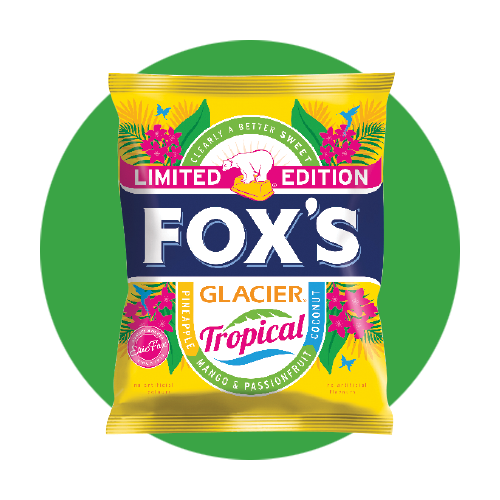
Fox’s Limited-Edition Glacier Tropical is a temporary brand extension that is now sticking around longer with three flavours – Pineapple, Mango & Passionfruit and Coconut.
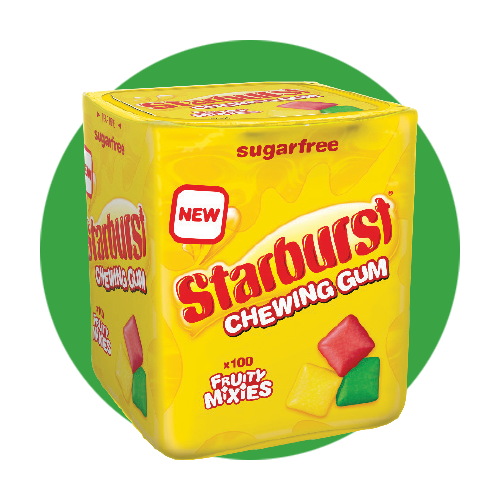
Starburst Chewing Gum Fruity Mixies, Strawberry Cubes and Red Berry Sticks complete a sugar-free range aimed at bringing younger consumers back to gum.
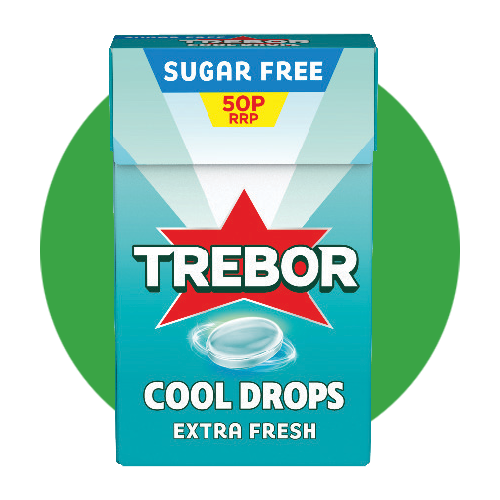
Launched in 28g flip-top boxes, Trebor Cool Drops are a sugar-free sub-brand that comes in Extra Fresh and Lemon flavours. Each contains 100 calories per pack.
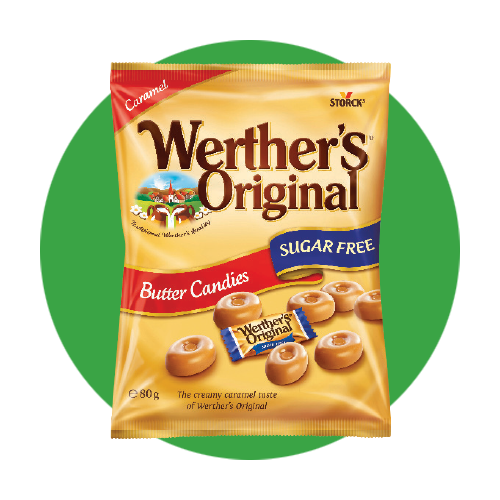
Werther’s Original Sugar Free is a goliath in the sugar-free market, with changes made to case sizes and new PoS that is designed to help wholesalers and retailers increase sales.
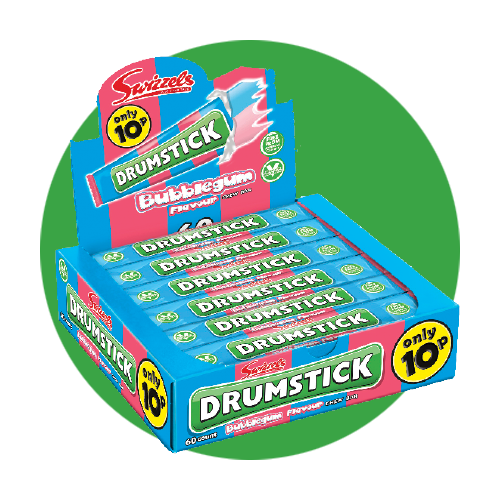
Swizzels has expanded its Drumstick Chew Bar range with a bubblegum flavour. Suitable for vegans, it follows the success of the original flavour, which is
in 18% growth.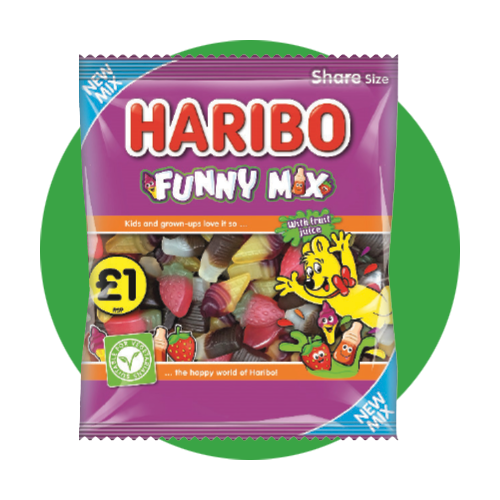
Haribo’s vegetarian range has been revamped with new colours and flavours for Jelly Beans and Funny Mix, as well as a new mini edition for Giant Strawbs.
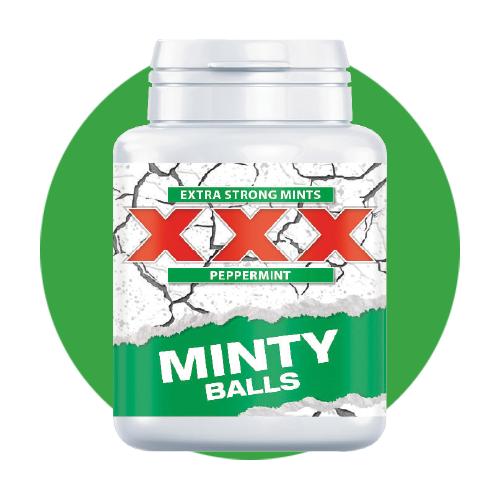
Sold in a handy travel pack perfect for long car or train journeys, XXX Minty Balls moves the brand into the on-the-go trend and is now available to wholesalers nationwide.
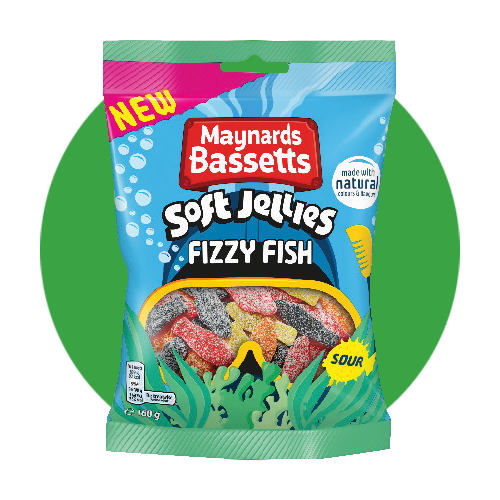
Following the success of 2018’s Wild Safari soft jellies, Maynard Bassetts Fizzy Fish sweets arrived alongside a brand-wide promotion with wacky prizes on offer.
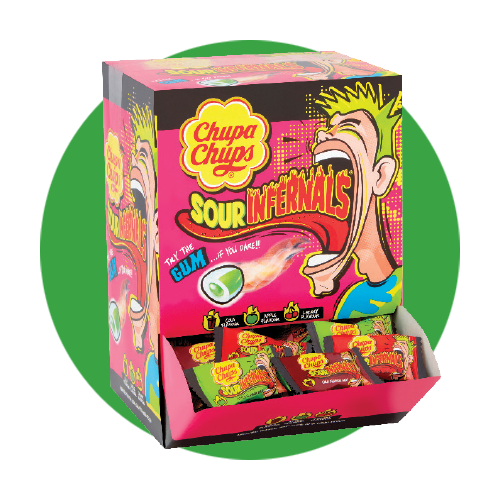
Chupa Chups Sour Infernals are a big winner for any customer looking for that sour punch in confectionery. Retailers report a big market for the product among schoolchildren.
Takeaway points
1. Emerging trends – The likes of sharing bags and on the go continue to dominate the product development and activity of major suppliers.
2. Fizzy and sour – These types of flavours are growing in popularity and bring new – especially younger – customers to the category.
3. Sugar-free – Incorporate these into
the rest of the sugar confectionery range with brand extensions sitting alongside the core range.
4. Price-marking – This is essential and versatile, with a multibuy deal suiting pocket-money budgets and £1 price-marking attracting on-the-go customers.
5. Food-to-go – Take advantage of the many sales opportunities provided by food-to-go to add an incremental purchase into shoppers’ baskets.











